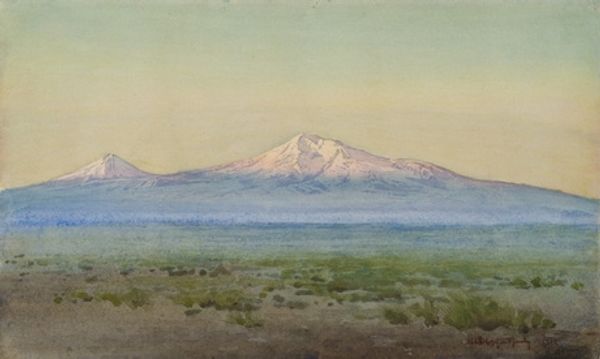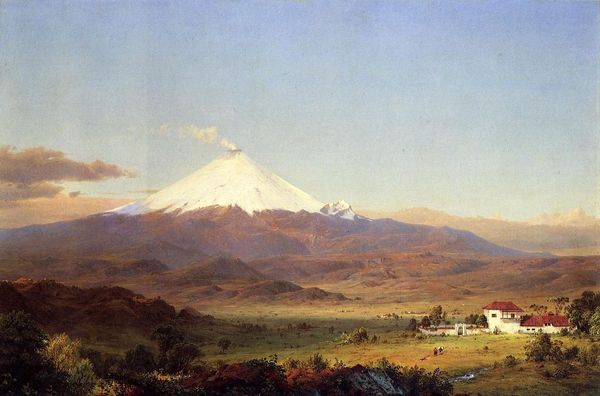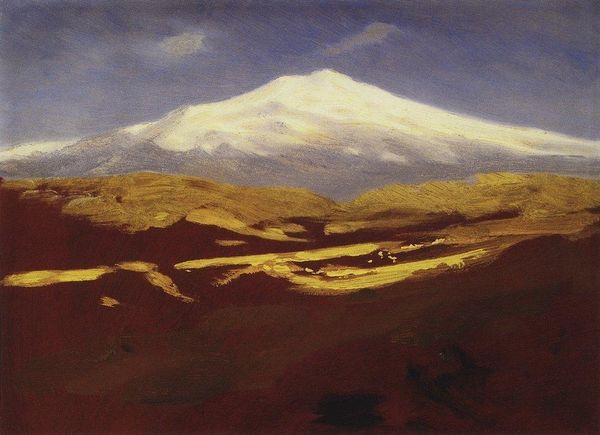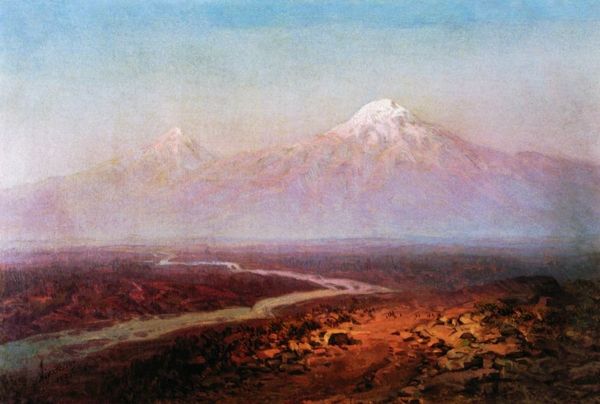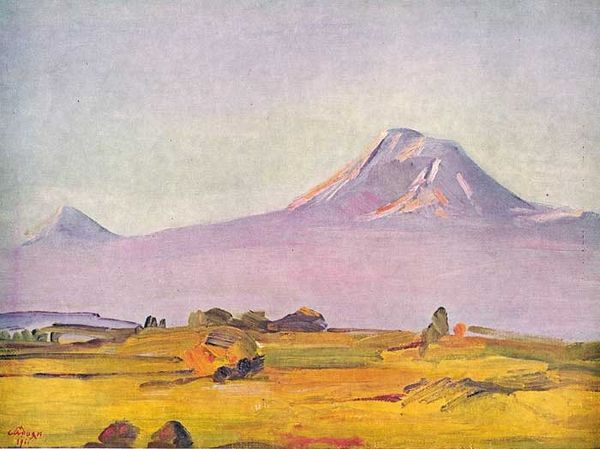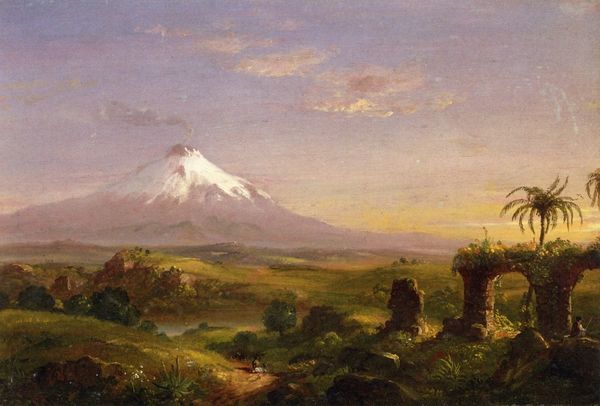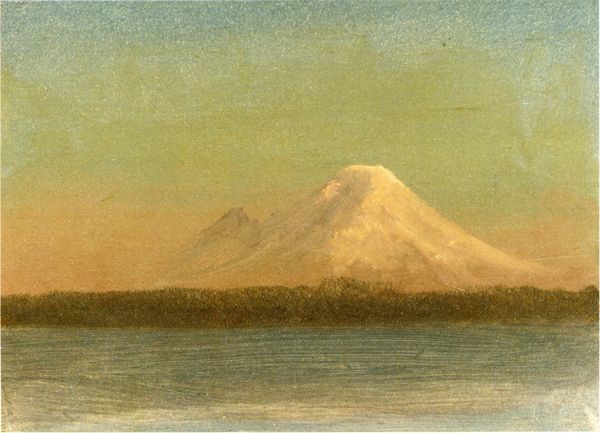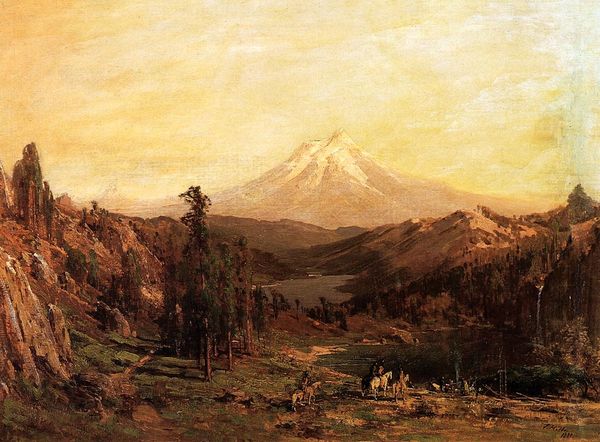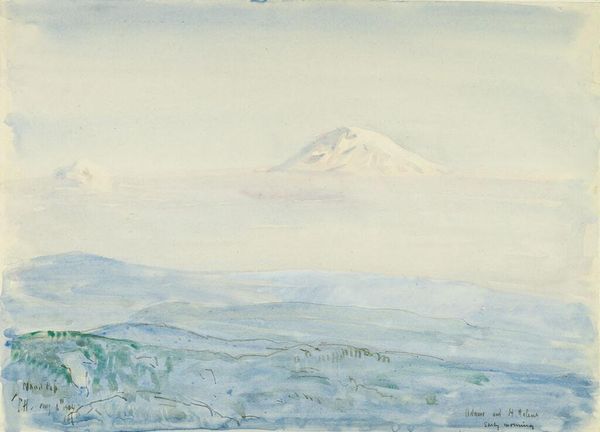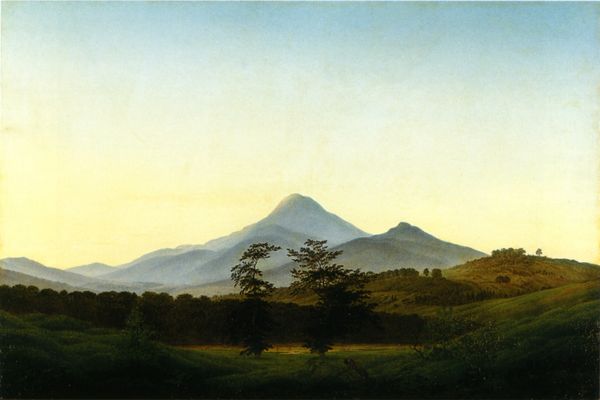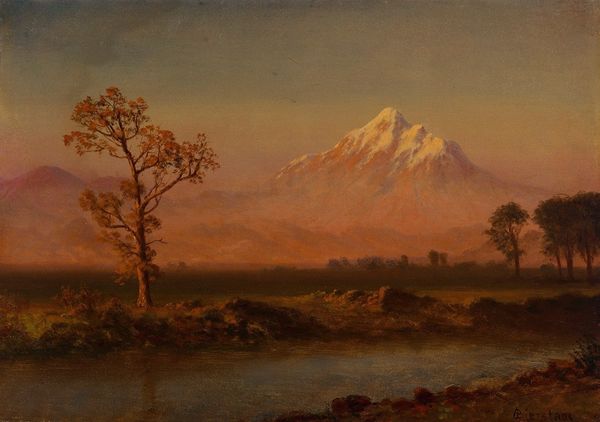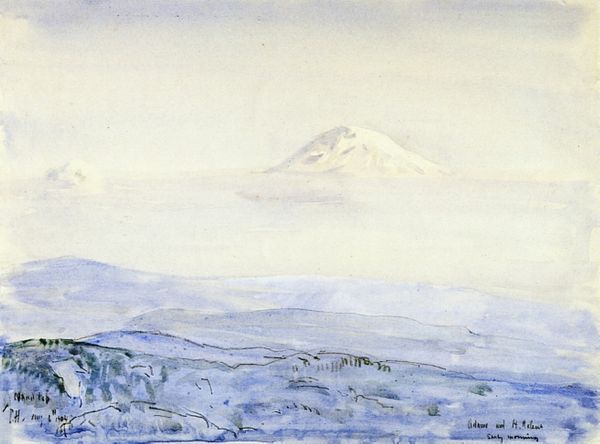
Copyright: Public domain
Curator: Gevorg Bashindzhagian's "Ararat," completed in 1912, is an oil painting that offers a tranquil, almost melancholic, panorama. Editor: There’s an undeniable serenity to this landscape. The muted tones, the soft focus – it feels dreamlike, as if remembered from a great distance. Curator: Absolutely. Bashindzhagian was deeply inspired by his Armenian heritage, and Mount Ararat, though situated in present-day Turkey, carries profound cultural and historical weight for Armenians. We should understand its contested nature. For Armenian diasporic communities, and in historical contexts, it stands as a symbol of cultural identity, resilience, and a reminder of historical trauma. The mountain looms, silent witness to both suffering and enduring hope. Editor: I see how the political landscape subtly inflects this seemingly simple vista. The foreground is rather muted, earthy tones suggesting a groundedness, yet the eye is inevitably drawn upwards to that imposing peak. There is something about the scale of the mountain looming over the muted plain, which invokes that contrast between the grand sweep of history, and the lives of the ordinary people tethered to the soil. Curator: Consider, too, the Impressionistic brushstrokes. This artistic style creates an atmosphere that emphasizes the ephemeral nature of place, making Ararat seem almost a vision, subject to personal interpretation and the vagaries of time. This resonates, because the image has served as a cultural keystone for a people frequently dispersed, forced to negotiate their identity and relationship to their lost homeland. Editor: It is fascinating to see that connection play out on canvas. You’ve given me so much to contemplate as I observe this scene and to contextualize this with how landscapes, and especially national or culturally important geographical features, become loaded with meaning. The way an artist like Bashindzhagian renders a place is never a neutral act. Curator: Indeed. It serves as a compelling reminder that art does not exist in a vacuum, that its interpretation and impact are intricately woven into the fabric of culture and history. Editor: A beautiful testament to the enduring power of place, and the strength of human memory.
Comments
No comments
Be the first to comment and join the conversation on the ultimate creative platform.
